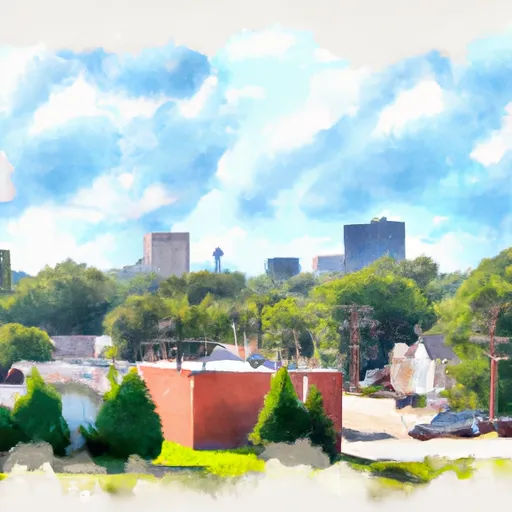-
 Snoflo Premium
Snoflo Premium
Get unlimited access to all our content
With no Ad interruptions! - Start Your Free Trial Login with existing account
Seward
Eden Index
Climate
7.3
•
Recreation
2.8
•
Community
•
Safeguard
3.9/10

Seward, Illinois is a charming village located in Winnebago County. The climate in Seward is typical of the Midwest, characterized by four distinct seasons. Summers are warm and humid, with average temperatures ranging from 70°F to 85°F, while winters are cold and snowy, with temperatures averaging between 15°F and 30°F. Spring and fall in Seward are mild and pleasant.
When it comes to hydrology constituents, Seward is situated near the Kishwaukee River, which runs through parts of Winnebago and DeKalb counties. The river offers opportunities for fishing, boating, and kayaking. Additionally, the village is surrounded by beautiful natural landscapes, including forests and parks, providing ample opportunities for hiking, camping, and wildlife observation.
Outdoor enthusiasts will find plenty to explore in and around Seward. The Kishwaukee River State Fish and Wildlife Area, located nearby, is a popular destination for hunting, fishing, and birdwatching. In addition, Rock Cut State Park, just a short drive away, offers a wide range of recreational activities, including hiking, picnicking, horseback riding, and swimming in Pierce Lake.
Overall, Seward, Illinois presents a picturesque setting with a diverse range of outdoor activities for residents and visitors alike.
What is the Eden Index?
The Snoflo Eden Index serves as a comprehensive rating system for regions, evaluating their desirability through a holistic assessment of climate health, outdoor recreation opportunities, and natural disaster risk, acknowledging the profound impact of these factors on livability and well-being.
Climate Health Indicator (CHI): 7.3
Seward receives approximately
912mm of rain per year,
with humidity levels near 83%
and air temperatures averaging around
9°C.
Seward has a plant hardyness factor of
5, meaning
plants and agriculture in this region thrive during a short period during spring and early summer. Most
plants will die off during the colder winter months.
By considering the ideal temperature range, reliable water supplies, clean air, and stable seasonal rain or snowpacks, the Climate Health Indicator (CHI) underscores the significance of a healthy climate as the foundation for quality living.
A healthy climate is paramount for ensuring a high quality of life and livability in a region, fostering both physical well-being and environmental harmony. This can be characterized by ideal temperatures, reliable access to water supplies, clean air, and consistent seasonal rain or snowpacks.
Weather Forecast
Streamflow Conditions
Rock
Area Rivers
Rock
Snowpack Depths
Rock
Reservoir Storage Capacity
Rock
Groundwater Levels
Recreational Opportunity Index (ROI): 2.8
The Recreational Opportunity Index (ROI) recognizes the value of outdoor recreational options, such as parks, hiking trails, camping sites, and fishing spots, while acknowledging that climate plays a pivotal role in ensuring the comfort and consistency of these experiences.
Access to outdoor recreational opportunities, encompassing activities such as parks, hiking, camping, and fishing, is crucial for overall well-being, and the climate plays a pivotal role in enabling and enhancing these experiences, ensuring that individuals can engage in nature-based activities comfortably and consistently.
Camping Areas
| Campground | Campsites | Reservations | Toilets | Showers | Elevation |
|---|---|---|---|---|---|
| Little Black Creek Waterpark | None | 296 ft | |||
| Lake Walker Military - Camp Shelby | None | 239 ft | |||
| McLeod Water Park | None | 22 ft | |||
| Big Creek Waterpark | None | 254 ft | |||
| Paul B Johnson State Park | None | 245 ft | |||
| Shockaloe Base Camp I | 10 | 578 ft | |||
| Marathon Lake | 71 | 481 ft | |||
| Turkey Creek Water Park | 22 | 434 ft | |||
| Boulder - Lake Carlyle | 90 | 457 ft | |||
| Buccaneer State Park | 276 | 5 ft |
Nearby Fishing
Nearby Ski Areas
Catastrophe Safeguard Index (CSI):
The Catastrophe Safeguard Index (CSI) recognizes that natural disaster risk, encompassing floods, fires, hurricanes, and tornadoes, can drastically affect safety and the overall appeal of an area.
The level of natural disaster risk in a region significantly affects safety and the overall livability, with climate change amplifying these risks by potentially increasing the frequency and intensity of events like floods, fires, hurricanes, and tornadoes, thereby posing substantial challenges to community resilience and well-being.
Community Resilience Indicator (CRI):
The Community Resilience Indicator (CRI) recognizes that education, healthcare, and socioeconomics are crucial to the well-being of a region. The CRI acknowledges the profound impact of these elements on residents' overall quality of life. By evaluating educational resources, healthcare accessibility, and economic inclusivity, the index captures the essential aspects that contribute to a thriving community, fostering resident satisfaction, equity, and social cohesion.

